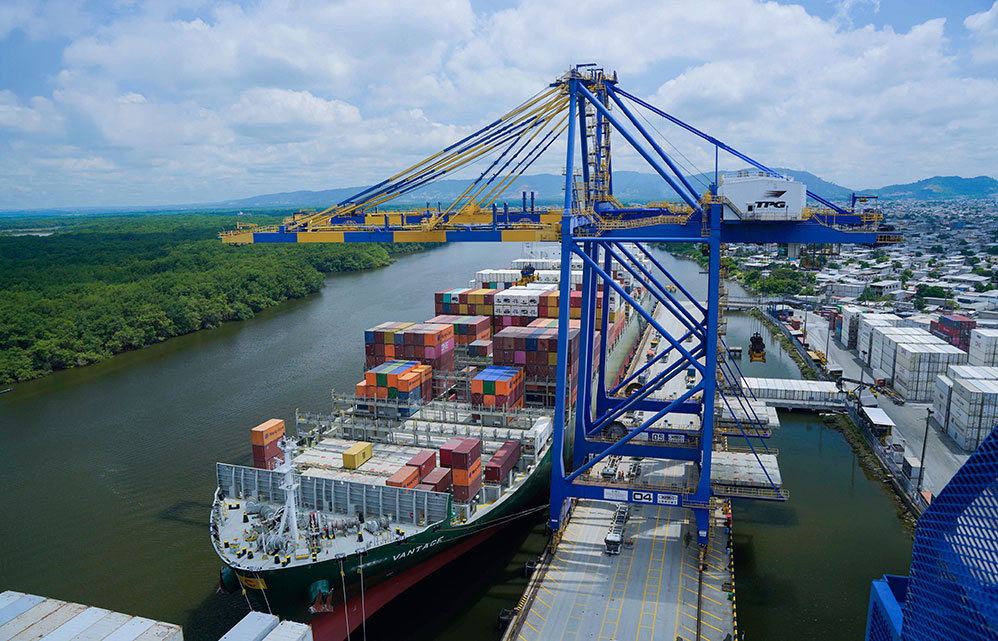Terminal Portuario de Guayaquil: A Cornerstone of Ecuador’s International Trade in 2024

In 2024, Terminal Portuario de Guayaquil (TPG) handled 801,506 TEU (twenty-foot containers), demonstrating its commitment to modernizing and optimizing operating processes. These efforts are key to strengthening the competitiveness of Ecuador’s foreign trade. In addition, the figure highlights the importance of having advanced infrastructure to drive economic development and help integrate the country into the global economy.
Guayaquil, January 9, 2025
Through its facilities, TPG exported important products like shrimp, bananas, flowers, tuna, broccoli, cocoa, plantains and timber such as teak and balsa. The main destinations were China, Chile, the United States, Japan and Spain, markets that demand the highest quality agricultural and fishery products.
On the import side, Ecuador received a variety of goods from countries such as China, the United States, Peru, Brazil and Colombia. These products range from inputs for the retail, food, paper, construction, plastics, chemicals and metallurgy sectors to vehicle parts and components and items for the agriculture, livestock, fishing and forestry industries.
TPG’s general manager, Luisenrique Navas, emphasized that the company will continue to focus on innovation, sustainability and efficiency in 2025, striving to remain a competitive benchmark in the global market. “We will continue to invest in continuously improving our infrastructure and optimizing our operating processes, always seeking excellence to benefit our customers and the Ecuadorian economy,” he said.
Throughout 2024, the TPG wharf served 342 vessels, mostly of lengths bordering 360 meters and transport capacity of up to 14,000 TEUs. One highlight of the year was the docking of PIL’s 366-meter Kota Peony, one of its largest vessels. The terminal’s modern infrastructure connects Ecuador with the most important international markets, consolidating its position as the port of call for the world’s top ten shipping lines.
Another development during the year was a newly implemented telemetry system, automating data collection from equipment, and the start-up of three new cargo control scanners. Environmental milestones include verifying its greenhouse gas inventory and certifying its carbon footprint reduction.

